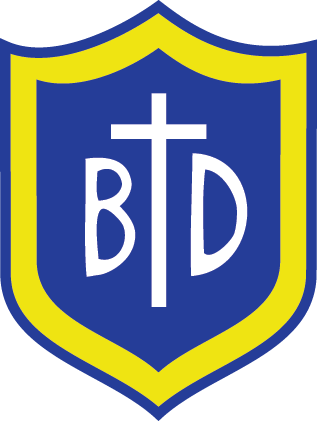Art
Art Vision
At Blessed Dominic Catholic Primary School, we strive to create an Art curriculum that engages and inspires children to express their individual creativity and to produce their own works of art. We aim to plan and teach creative, inspiring Art lessons, which are memorable and encourage children to develop their own artistic techniques as well as experiment with new styles. We provide opportunities for children to develop their thinking by asking questions that inspire wonder. Creativity is encouraged from the very beginning of our children’s school experience. Within EYFS, children are immersed in art in a child-initiated way, through Expressive Arts and Design.
Across Years 1 to 6, children are provided with opportunities to experience a variety of media and techniques and are educated by influential artists and craft makers from around the world, both past and present. Within Key Stage 2, our Art curriculum aims to equip all children with the knowledge and skills to make informed choices, think critically of their own artwork and that of others, and to work with increased autonomy. Our ethos is that we are not afraid to make ‘mistakes,’ but instead, we learn from them. We encourage all of our children to be risk-takers, problem solvers and to develop resilience.
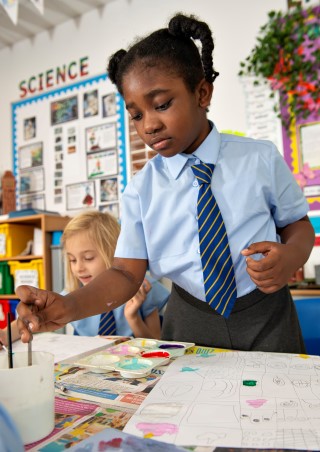
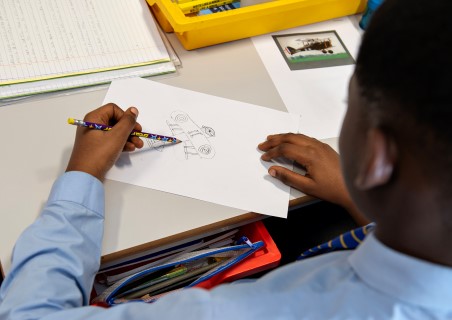
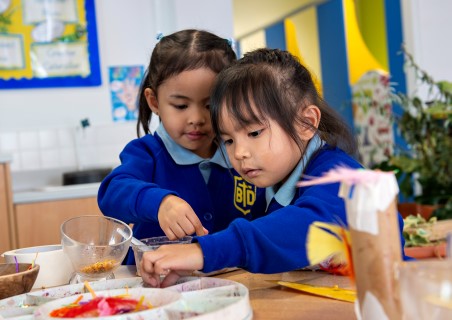
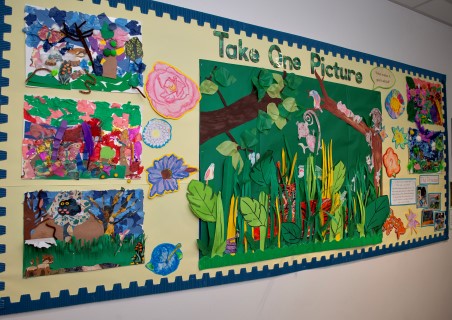
Characteristics of an Artist
At Blessed Dominic Catholic Primary School, we are Artists. We have…
- The ability to use visual language skilfully and convincingly (for example, line, shape, pattern, colour, texture, form) to express emotions, interpret observations, convey insights and accentuate their individuality.
- The ability to communicate fluently in visual and tactile form.
- The ability to draw confidently and adventurously from observation, memory and imagination
- The ability to explore and invent marks, develop and deconstruct ideas and communicate perceptively and powerfully through purposeful drawing in 2D, 3D or digital media.
- An impressive knowledge and understanding of other artists, craft makers and designers.
- The ability to think and act like creative practitioners by using their knowledge and understanding to inform, inspire and interpret ideas, observations and feelings.
- Independence, initiative and originality which they can use to develop their creativity.
- The ability to select and use materials, processes and techniques skilfully and inventively to realise intentions and capitalise on the unexpected.
- The ability to reflect on, analyse and critically evaluate their own work and that of others.
What does this look like at Blessed Dominic Catholic Primary School...
We provide knowledge organisers are used to introduce and reinforce key vocabulary and act as a prompt for use in discussion or writing.
We follow a mix of Kapow & Plan Bee Art and design scheme of work which fulfils the statutory requirements outlined in the National Curriculum (2014). The National Curriculum for Art and design aims to ensure that all pupils:
- Produce creative work, exploring their ideas and recording their experiences
- Become proficient in drawing, painting, sculpture and other art, craft and design techniques
- Evaluate and analyse creative works using the vocabulary of art, craft and design
- Know about great artists, craft makers and designers, and understand the historical and cultural development of their art forms.
From these aims, four core strands/chunks were identified which run through the scheme. These are:
Drawing
Exploring mark-making in all its forms, experimenting with line, tone and texture and using a wide range of materials to express ideas as drawings. Using sketchbooks to record observations about the world as drawings. Learning how drawing is used by artists to develop and communicate their ideas creatively.
Painting and mixed media
Developing proficiency in painting techniques (including exploring colour mixing), painting on a range of surfaces and applying drawing skills to painting projects. Using sketchbooks to practise painting methods and exploring between different media within a piece of artwork.
Sculpture and 3D
Constructing and creating models with a wide variety of materials, investigating ways to express ideas in three dimensions. Developing the ability to adapt ideas and designs in sketchbooks, moving from two dimensions into sculpture.
Craft and design
Producing a wide range of creative work, becoming proficient in a range of making processes. Building on skills in photography, printmaking, textile art and digital media, and exploring design disciplines such as architecture and product design.
Within these strands, concepts are revisited and reinforced throughout, building a secure knowledge as the unit develops. Evidence of this sequential learning and progression can be found below in our Curriculum Overview and Progression of Skills document.
SEND
We pride ourselves on providing learning opportunities that are accessible and ambitious for all learners, enabling all children to make progress and have a sense of achievement. We achieve this through sequential planning, allowing skills to be scaffolded and extended as appropriate.
Cross Curricular
We recognise the value art plays in the teaching of other subjects. Teachers have the opportunity to teach units through cross-curricular topics without losing the core Art and design objectives. This allows children to make meaningful links, helping to strengthen and build connections in learning. We also avail of living in the Cultural Capital with trips to art galleries and other visits.
Impact
The impact of the will be monitored through both formative and summative assessment opportunities. Within art, formative assessment occurs throughout the learning process, through conversations with children. Progress can also be demonstrated through the use of sketchbooks to record ideas, reflections, analysis of artists and development of technical skills. Within EYFS, teachers will use the assessment outcomes for Expressive Arts and Design: ‘Exploring and Using Media and Materials’ and ‘Being Imaginative’.
